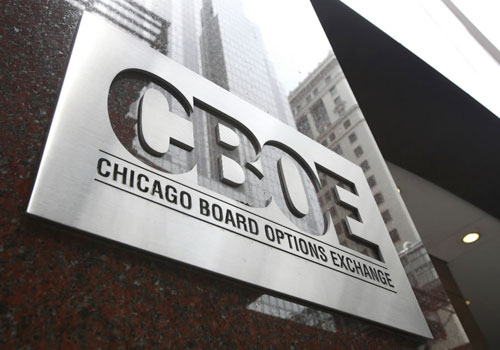TECH TUESDAY is a weekly content series covering all aspects of capital markets technology. TECH TUESDAY is produced in collaboration with Nasdaq.
Nasdaq commenced its journey in the emerging technology of cloud in 2008, and more than a decade and half later, the exchange group is at the forefront of integrating artificial intelligence (AI) into financial markets, particularly in fraud detection, risk management, and surveillance, CEO Adena Friedman said last month at an industry conference.
Traders Magazine caught up with Doug Hamilton, Nasdaq’s Head of AI Research & Engineering, to learn more about his background and his role, as well as the present and future of AI.
You’ve had an interesting career path, from the US Air Force to AI in financial markets. Can you briefly discuss how your career has unfolded?

Joining the Air Force was a great decision, as it taught me a lot about what I wanted to do from there. While in the Air Force, I was working on my undergraduate degree in mathematics, thinking I wanted to be a topologist or differential geometer at the PhD level. But then I ended up in grad school focusing on operations research, and I got my first gig in data science at the right time in 2015 with Boeing. In 2017, I made my way to Nasdaq as one of their first data science hires, before becoming chief data scientist and now heading up AI research and engineering. It’s been a winding path, but a good one.
Describe your current role and responsibilities as Head of AI Research & Engineering at Nasdaq?
My team is responsible for pursuing AI across the entire enterprise. We want AI solutions in our index business, in our markets, in more governance, and across each business. We continue to think about where it can be implemented, both through products that deliver value directly for our customers, and solutions that make our business run more efficiently.
The team itself is split into two groups – the data science AI research group, and the AI engineering group. The data science team is very good at designing, building and testing models – making sure they work extraordinarily well. Our AI engineers are very good at building and maintaining production systems while making sure our data pipelines are incredibly robust.
How have Nasdaq’s AI capabilities evolved over your eight years with the firm, and how would you characterize current capabilities?
Our capabilities have grown substantially, now we are using AI across the entirety of the business both in the product, which means the gains we can deliver to clients through integrating AI directly in the products we offer, and in the business, which means bringing the efficiency and enhancements of AI internally to be used by our team.
On the technological side, we’ve launched reinforcement learning systems, deep learning systems, and all manners of large-scale optimization. The complexity of our compute stack and our ability to take advantage of compute has grown from just large, individual CPUs to cluster GPUs. And on top of all of that, we’ve built a number of pieces of proprietary technology, which are custom platforms for running AI at market speed and enable us to make sure that our AI systems meet the unique demands of the environment we operate in.
What are your main current initiatives?
We’re focused on two major initiatives. On the business side, we’ve been developing a generative AI platform that’s designed to provide a safe, governed way for every single person at the company to access the latest and greatest generative AI models. People at Nasdaq can use this in high code ways, in agentic ways, and in no code ways, to both automate and augment their existing workflows. In small-scale testing we’ve seen 10% to 20% productivity gains from this system for developers, analysts, and others.
The second area of focus is in our dynamic markets initiatives. This is where we’re using AI to make our capital market structure more efficient and more aware of what’s going on at any one time. One flagship example, is that since 2022 we’ve been listing almost all of the strikes on our options markets with AI, to make sure that the supply of strikes is aligned with the demand. The other example is the Dynamic Midpoint Extended Life Order (M-ELO), the first exchange approved order type to use AI to optimize execution holding periods to improve fill rates and minimize market impact.
How would you describe the value of Nasdaq’s partnership with Amazon Web Services (AWS)?
We have close partnerships with AWS as a cloud provider. AWS provides a lot of elastic compute for us, as well as the SageMaker ecosystem for use as a modeling and testing platform, which helps support a lot of our dynamic market initiatives. We don’t have to buy huge amounts of compute to do our research work, and we can be confident in the overall reliability of overnight computation that informs our systems in production.
Are there any common misconceptions about AI that you come across, either within the financial markets industry or more broadly?
People keep saying that AI systems are black boxes, which is simply untrue. Most AI systems are more explainable and auditable than human decision making. Being able to understand and analyze an AI system’s decision-making process is crucial for accountability and trust within the financial markets ecosystem. That is why Nasdaq is committed to the ethical and responsible use of AI in our products, services and business operations. Our AI governance structure aligns the application of AI with our core values through a framework that addresses the new and unique risks that AI technology presents, while enabling us to explore innovation and take advantage of opportunities that AI presents.
What is Nasdaq’s longer-term vision for AI?
We see AI as core for almost everything we do in the future, from workforce efficiency gains to delivering new and novel insights to our clients in various intelligence and data-driven platforms. We see AI as playing an important role in clarifying, defining and making the next generation of markets and market technologies, and we see it playing an incredibly important role in the fight against financial crime and money laundering.
Creating tomorrow’s markets today. Find out more about Nasdaq’s offerings to drive your business forward here.









